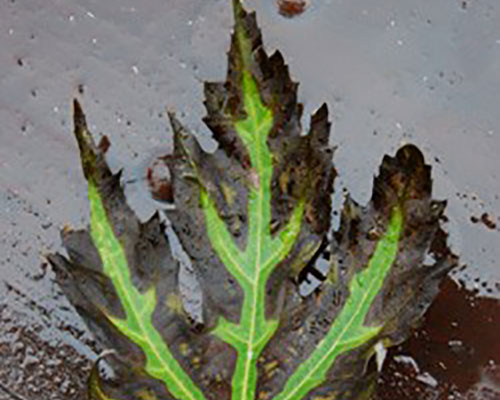
Melinda’s Garden Moments is heard Mon.-Fri. at 7:45 and 10:45 a.m. and 4:45 p.m. on 97.9 WHAV.
Don’t let the black tar-like spots on your maple tree make you fret. Though one of the more noticeable, it is one of the less damaging of the fungal leaf spot diseases.
Tar spot symptoms look as if someone dripped tar on the leaves. A European tar spot that has found its way to North America can also attack Norway and striped Maples. These spots are thinner, less tar-like and surrounded by a yellow halo.
You’ll see more spotting during summers following a wet spring. The disease organism survives the winter on the tar spot infected leaves lying on the ground. Raking and destroying the leaves will help reduce the source of infection but is usually not practical. Everyone in the area must do the same in order for this method of control to be effective.
So be patient and wait for a drier spring and the disease to run its course.
A bit more information: Chemical control is not practical, nor recommended. You must treat before the spots have developed and have complete coverage. This is difficult on large mature maple trees. Proper care is the best defense against this and other diseases. Water properly and mulch trees to keep them healthy.
For more gardening tips, how-to videos, podcasts and more, visit www.melindamyers.com.

